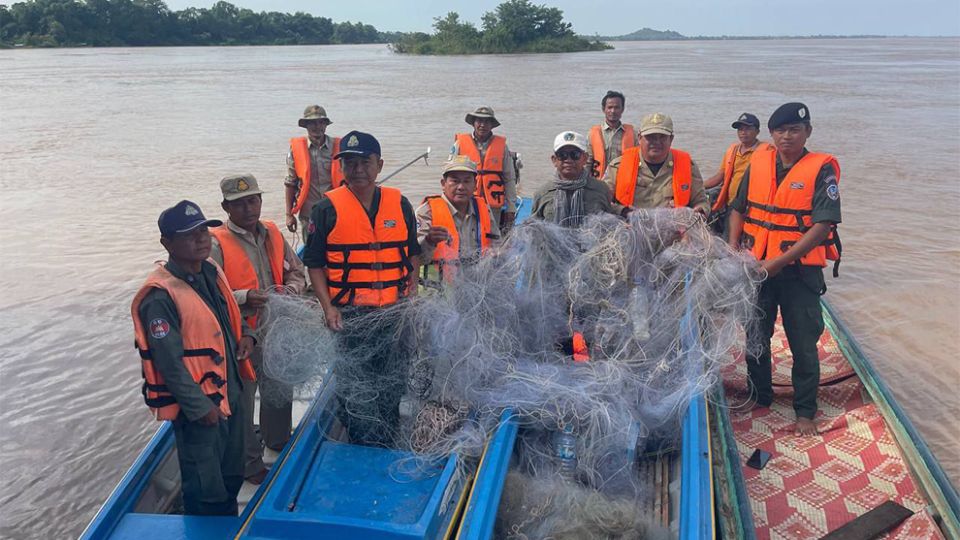July 11, 2025
PHNOM PENH – Patrol teams and community fisheries officers stationed in Irrawaddy dolphin conservation areas have requested additional equipment from the Ministry of Agriculture. They have asked for more high-powered flashlights, reflective glass spotlights, hammocks and extra fuel to support patrols. In addition, they noted that their patrol boats — vital for anti-poaching work — are aging, with some now broken, according to the ministry.
This request was made during a recent field inspection along the Mekong River by Tim Borak, ministry undersecretary of state. The mission focused on protecting fisheries and preventing illegal fishing in areas designated for Irrawaddy dolphin conservation in Stung Treng province.
During the operation, a team confiscated illegal fishing equipment, including 15-centimeter gillnets and longline hooks, and also conducted an educational intervention with one fisherman.
On Wednesday, July 9, Borak and his team uncovered and confiscated more illegal fishing gear along the Mekong River in Kratie province, again in protected dolphin zones. The seized items were destroyed by the working group.
The population of Mekong Irrawaddy dolphins in Cambodia has now increased to 111 individuals, including the seven newborn calves recorded this year. A total of 72 river guards are currently stationed across Kratie and Stung Treng, each of them involved in the protection and conservation of the precious endangered dolphins.


